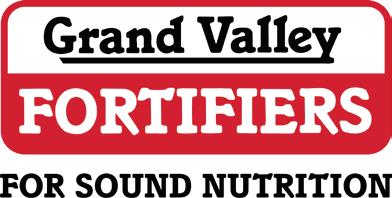

Swine Grist
A PERIODIC NEWSLETTER PRODUCED BY GRAND VALLEY FORTIFIERS
SUMMER 2024
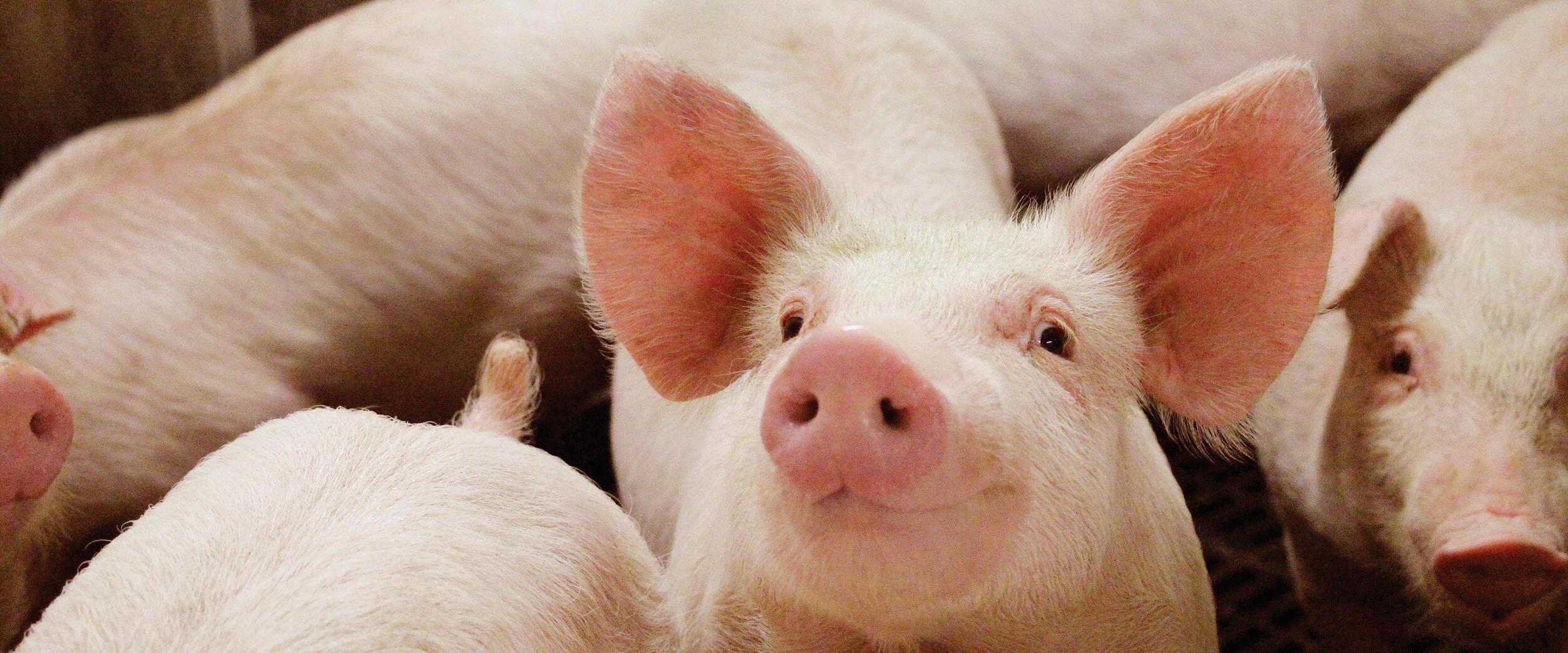

Dear Swine Producing Friends,
As official summer rapidly approaches, we are pleased to provide you with a copy of our Swine Grist – Summer Edition. Across the country, the planting season weather and moisture levels have been “all over the map” with many parts of the Prairies being dry after experiencing less than normal snow fall and spring rains. In Ontario, parts of the province had difficulty getting seed into the ground while other parts were relatively dry for three weeks in May, making for easy planting. Regardless of the start, we pray for a bountiful, high-quality harvest of grains and oilseeds for swine producers this year – especially in the Prairies and Western Canada, some of which have suffered with poor crop yields in recent years. Through the reading of this edition of the Grist, you will be introduced to our newest Nutritionist, João Ferreira. With the addition of João, our Monogastric and Ruminant Nutrition team has expanded to fifteen – many of which have which have been born,

Heat stress management in sows: Nutritional and environmental strategies
by: Youngji Rho, Ph.D. Monogastric Nutritionist, Grand Valley FortifiersCompared to other animals, pigs are naturally more prone to heat stress. They lack functional sweat glands and have relatively small lungs compared to their body size, which makes it challenging for them to release heat by panting. Additionally, modern pigs are more prone to heat stress than animals from decades ago, as they are leaner and more productive, which generates more body heat. When the temperature rises above the sow’s upper critical temperature (24 -25°C), they are unable to or have more difficulty maintaining their homeostatic body temperature, and we call this “heat stress”. With the change in climate and increasing temperatures around the world,
raised, educated and attained industry experience in other parts of the world. It is wonderful to witness the fresh ideas and perspectives that come from our expanding Nutrition team with diverse backgrounds, learnings and experiences. Besides João’s article on the importance of high-quality water, I am confident that you will also appreciate Youngji Rho’s article on Heat Stress in sows and Drew Wood’s article on the importance of doing the deep nutrient dive on ingredients.
We are looking forward to participating in the Ontario Pork Congress again on June 19th & 20th in Stratford. The Congress always provides a great opportunity to reconnect and catch up with producers over a coffee. Please take the time to come visit with us at the Grand Valley Fortifiers and the Farmers Depot booth spaces in the Agriplex Building.
Sincerely, Ian Ross
President& CEO, GVF group of companies

the concern of heat stress is no longer limited to specific regions. It has been estimated by Dr. Pollmann that the impact of heat stress on the American swine industry amounts to approximately $900 million per year, with half of the losses attributed to the breeding herd (Pollmann, 2010).
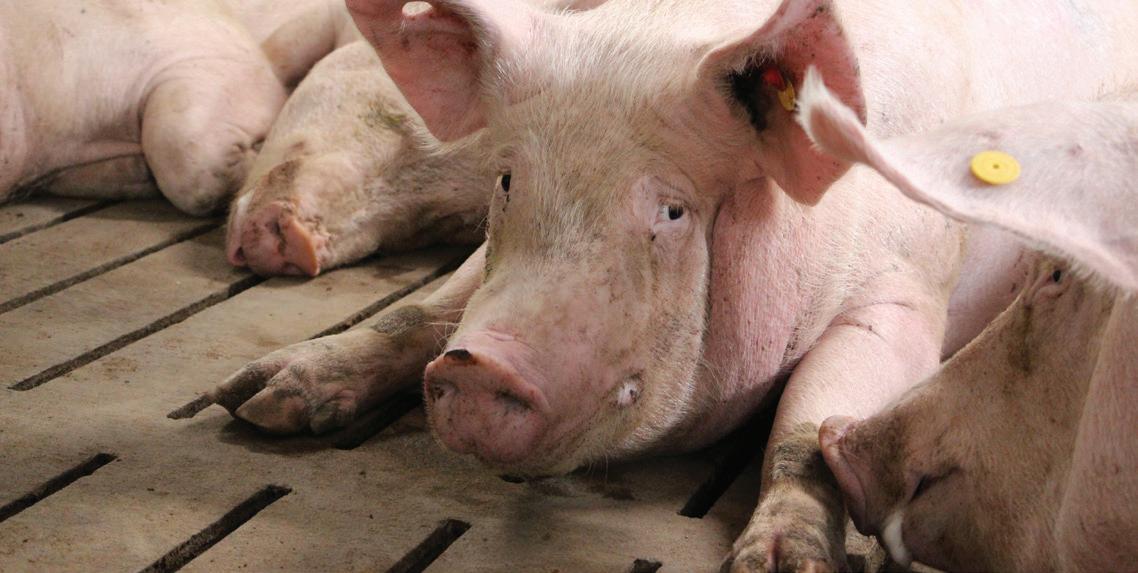
Sows are particularly vulnerable to heat stress and a major consequence of heat stress is reduced feed intake, which is detrimental during a time of high nutritional demands. To release excess heat, blood flow is redistributed towards the periphery of the sow’s body. Unfortunately, this reduces blood flow to other organs including the gastrointestinal tract (GIT), leading to inflammation, oxidative stress, and damaged tissues-commonly referred to as “leaky gut”. Consequently, impaired feed digestibility in sows can result in a negative energy balance, poor body condition, and reduced milk yield during lactation. Respiratory alkalosis is another issue faced by heat stressed sows. Excessive panting causes excessive CO2 loss and imbalance of various biochemical and physiological functions in the sow's body. Furthermore, heat stress can compromise reproductive efficiency. Sows exposed to high temperatures have smaller and slower follicular growth after weaning. This results in an increased number of sows showing anestrus and silent estrus, ovulation failure, and longer weaning to estrus intervals.
Given all the above, we can conclude that managing heat stress is critical in sows. Addressing heat stress requires a comprehensive approach that incorporates both nutritional interventions and management of environmental factors within swine facilities.
Strategies to alleviate heat stress
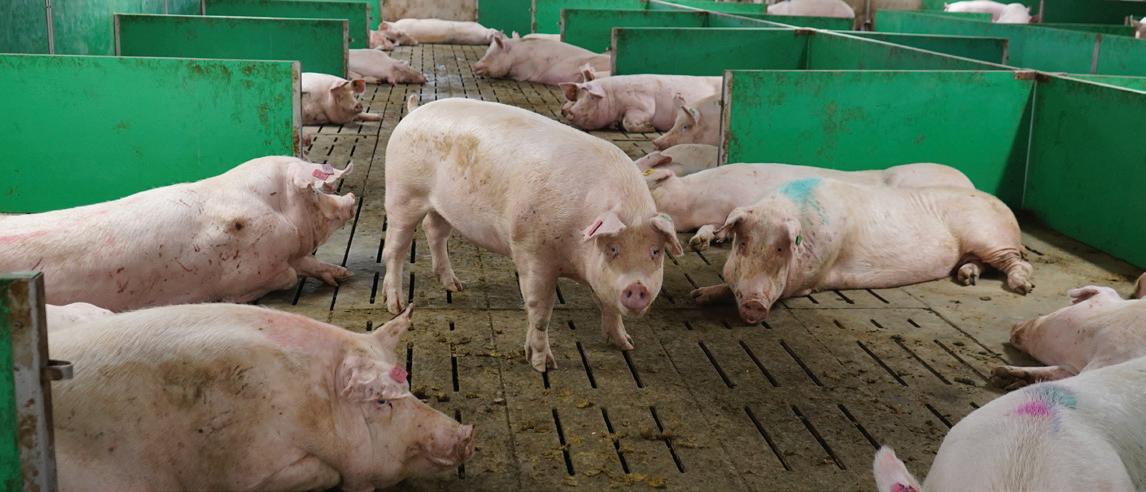
Environmental Strategies to consider:
01. Improved ventilation management
02. Drip/sprinkler cooling
03. In-floor cooling
04. Reducing the pen density
05. Adjusting the temperature of the heat pads or the heat lamps for the piglets in the farrowing room
However, these environmental changes may not be applicable at certain facilities and/or may require more time and investment to implement.
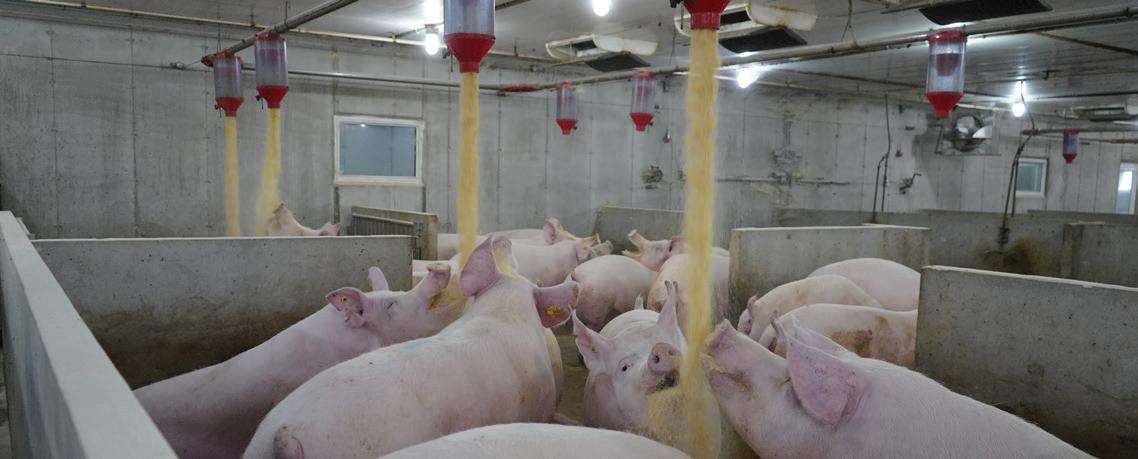
Nutritional Strategies:
01. Water quality and supply is necessary year-round, as it plays a critical role in various metabolic functions. During the summer months, water requirements increase, necessitating more frequent checks of water lines to ensure a clean and sufficient supply. Additionally, maintaining appropriate drinker heights for easier access is essential. We also recommend ensuring the correct amount of drinkers for the stocking density of each pen. If you’re unsure of your water quality or want to improve it, we suggest consulting with a water expert from Farmers Depot.
02. Depending on the feeding system, if the time of feeding can be changed to a cooler time of the day (e.g. early morning and late evening) it could improve feed intake. However, if this is not possible, other nutritional strategies should be considered.
03. Feeding a diet formulated to have a low thermic effect can help reduce the heat generated from feed consumption. This can be accomplished by increasing the use of fat sources and reducing the protein and/or fiber content of the diet. Among energy sources, fat has the highest digestibility and generates the least amount of internal heat when metabolized.
04. While dietary fiber is essential for maintaining a healthy gut, improving satiation in dry sows, and reducing constipation around farrowing, it’s crucial to consider the heat generated from fiber fermentation in the hindgut. Therefore, fiber inclusion should be carefully evaluated to balance its benefits and drawbacks in a heat stress situation.
05. Electrolyte supplementation can help maintain proper hydration and
electrolyte balance as they are essential for regulating cellular functions and fluid balance. Common electrolytes include sodium, potassium, and chloride and these can be supplied through either feed or water.
06. Supplementing extra levels of feed additives like zinc and antioxidants (e.g., Vitamin E and selenium) have been shown to protect intestinal barrier integrity during heat stress.
07. Fatty acids, especially n-3 and n-6, can positively impact follicle development and ovulation. Omega-3 fatty acids possess antiinflammatory properties and can help mitigate the inflammatory response associated with heat stress when supplemented.
It is crucial to recognize the signs of heat stress on sows and explore mitigation options that are feasible on your farm. Utilizing the options stated previously can help reduce the negative impacts of heat stress on sows which will allow your sows to remain healthy and productive year-round. We recommend you speak with your Nutritionist or Swine Specialist today to plan the best mitigation strategy for your hog operation this summer.
References: Pollmann, D. S. 2010. Seasonal effects of sow herds: industry experience and management strategies. Midwest ASAS Billy N. Day Symposium.

Ingredients or Nutrients?
Why not both!
by: Drew Woods, M.Sc. Manager of Monogastric Nutrition, Grand Valley FortifiersAs part of a healthy diet, we all must eat things we don’t necessarily like because they provide the nutrients that allow us to grow and function well. This lack of enthusiasm for food could be due to taste, texture, intolerances, or other factors. When we look at animal nutrition, it is similar in that pigs need nutrients from their food, but like us, we want to make sure they have palatable feed to maximize intake and growth. The argument can be made that pigs truly only need nutrients and that ingredients don’t matter, but that means we must know the nutrient composition in each ingredient in order to formulate a balanced ration. While it is correct that pigs utilize nutrients such as proteins, carbohydrates, fats, vitamins and minerals, we need to remember that if the ingredients being used don’t drive intake, we are just hurting production. Let’s look at some common ingredients used (excluding corn and soy), some limitations to their use, and how a well-rounded diet is created.

If we simply look at the nutrients in Table 1, we can see a typical separation of the ingredients based on if they contribute relatively more energy or protein. However, relying on their primary nutrient (e.g. fat or protein) can lead to shortfalls in diet creation. For energy ingredients, bakery meal and roasted soybeans are very popular and when considering energy content, this is due to a higher fat content. Roasted soybeans also come with the benefit of high protein, but it is in a lower concentration than soybean meal. This means that when high levels of roasted soybeans are used, amino acid supplementation is needed to provide the same levels as soybean meal. When we look at our protein ingredients, the first two, DDGS and canola, are expected, but having wheat shorts on that list may surprise some readers. It is lower in crude protein than both canola and DDGS, but it is a better source of digestible amino acids than DDGS. Despite the higher crude protein content of DDGS, wheat shorts still have a more favourable amino acid profile.
Switching over from an ingredient level review, let’s look at some of the limiting factors associated with the various products presented. In Table 2, the energyproviding ingredients and their risk factors are very different than the proteinproviding ingredients. The main issue when using too much of a high-energy ingredient is disruption of protein to energy balance in the diet, which can alter the body composition or carcass characteristics of the animal. If we overfeed energy, with high fat ingredients in particular, the animal is more likely to use that extra energy for fat deposition and not lean muscle. Also, high energy diets can give the illusion of a good FCR, but it is really just taking advantage of the efficiency of using dietary fat and directly depositing it as body fat. When we jump to our protein ingredients, the main risk from DDGS is the mycotoxin factor. When corn is poor quality, DDGS tend to be poor quality. We also need to ensure the quality of the drying process, as this can affect was done well and the protein quality is not affected. The final caution on this ingredient is the level of unsaturated fats, which can lead to soft carcass fat, which is not desirable for the packer or consumer. When considering canola, historically, canola it has been dismissed due to potential anti-nutritional factors. Although these have been removed via selective breeding in the plants, the limiting factor is palatability. Canola can have a bitter taste and should not be included above 15% in latestage finishing rations.

One thing to note is that canola also has more fibre than wheat shorts, which makes it a great source of both protein and fibre. Finally, wheat shorts can also be at risk of mycotoxins, but their greatest limitation is bulk density. It is a very fluffy ingredient and can make diet manufacturing difficulty when used at high quantities.
Ingredient Limiting Factors
Energy-providing
Bakery Meal Variability, high sodium, high fat, carcass quality
Roasted Soybeans Anti-nutritional factors, high fat, carcass quality
Protein-providing
DDGS Mycotoxins, variable processing, low quality protein
Canola Palatability
Wheat Shorts Bulk density
With all of this being said, when we consider the limitations of the ingredients and the nutrients contained in them, we can create a diet that provides everything that is needed by the pig at a specific life stage, while still encouraging adequate feed intake. The Nutrition Team at Grand Valley Fortifiers and Fortified Nutrition are experts at achieving this balance, while considering your on-farm ingredients and operation, to make optimal feeding programs for your pigs. If you’re not a GVF customer, but, interested in having our Nutrition Team review your diets please reach out to one of our Swine Specialists to get connected with us. References: CvbPortaal, 2021.https://www.cvbdiervoeding.nl/pagina/10021/ home.aspx

Continuous Evaluation of Nursery Budgets
by: Emily Miller, Ph.D. Monogastric On-Farm Technology and Product Performance SpecialistTo provide the best solutions for our customers, Grand Valley Fortifiers continually runs trials in the nursery phase. We do this to fine tune the recommendations for our feeding programs, test new products, or even try out new ingredients. Nursery pig nutrition is an important area of focus as the pig weight coming (in and) out of the nursery is predictive of lifetime performance. When considering the feeds available for nursery pigs, there can be many choices. In addition to choosing a feeding program that fits well for the piglets, it is also important to consider what makes sense given the space available for feed storage, how much is needed per batch of pigs (early feeds have a small feed budget), and the cost. With our BioForce® product line of complete nursery feeds, we wanted to drill down on the feeds and budgets used from weaning to 9 kg, where Initiate™ and Propel™ are currently recommended.
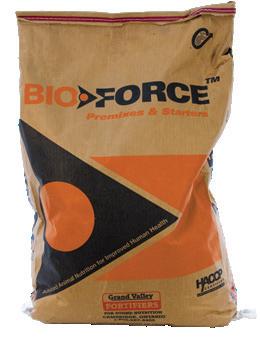
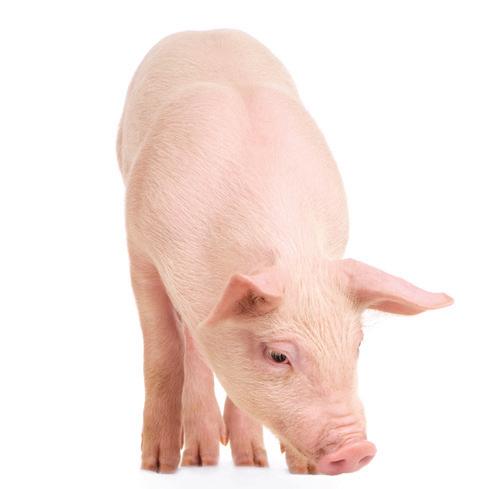
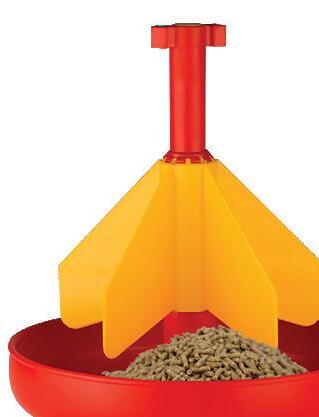
In a trial conducted with 550 weaned pigs, we trialed our standard nursery budget of BioForce® Initiate and BioForce® Propel vs. skipping the first nursery feed, BioForce® Initiate, and allocating more of the second nursery feed, BioForce® Propel, in our simplified budget Table 1. Once the pigs were approximately 9 kg, they were all switched to BioForce® 180 and followed the same feed budgets between the two groups until the trial finished. The trial ran for 42 days, with technical and economic performance in Table 2
As can be seen in the data above, there was no difference in performance between the pigs given the Simplified or Standard nursery program. The pigs receiving the Simplified budget had slightly higher total feed cost (due to slightly higher overall feed intake), but the feed cost per kg of gain and margin over feed cost was the same for both groups. It is also important to highlight the exceptional nursery performance across both groups, with >580 g/d ADG and ≤1.45 feed conversion ratio.
When considering the performance based on the Standard and Simplified budgets, the start weight of the trial (7.55 kg across both groups) should also be considered. BioForce® Initiate is recommended for pigs between 5.5 and 7 kgs, followed by BioForce® Propel from 7 to 9 kgs. This trial supported those recommendations and if you are raising weaned pigs that start at 7 kg and heavier, you could consider starting the nursery feeding program with BioForce® Propel®, which also allows for one less type of feed to manage on your farm. This trial is a great example of continuous evaluation of the nursery feeding programs at Grand Valley Fortifiers. Each trial gives us more insight and allows us to make improvements to our feeding programs, with the ultimate goal of improving the performance and profitability of our customers’ operations. We do recognize that every farm is different, and conditions can even vary from batch to batch, highlighting the importance of continuous data generation and product evaluation. If you would like to learn more about running trials on your farm or sharing data with us, please reach out to support@onfarmbi.com or your Swine Specialist!
Would you like more information about the nursery feeding programs available from Grand Valley Fortifiers?
Contact us today by calling: 1-877-625-4400 or 519-621-4400


Commodity Outlook
by: JP Thibault, Business Development Manager
Join us in Welcoming Our Newest Monogastric Nutritionist!

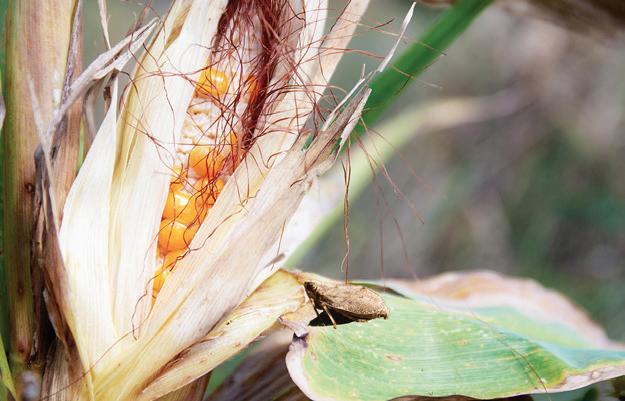
Each day gets us closer to the end of the North America planting season. Rain has been a hot topic because there was not enough at the beginning, and we could hear the rumbling sound of a drought. The Hedge Funds and the market participants bought into that story and the big 3 (corn/wheat/bean) have felt the bullish pressure, especially the wheat with concerns over the world supply. South America’s harvest had a few hiccups, yield losses due to leafhopper insects in Argentina and torrential rains in the state of Rio Grande do Sul (Brazil's second-largest soybean producer). Have you heard about the expression; Buy the rumor, sell the fact? Rumor: all these things got priced into the market because they worried market participants. Facts: then suddenly they seemed to be less of a problem because US got rain, although they are not behind the 5-years planting pace and the drought monitor looks way better than before the rain. Brazil and Argentina lost yield, but the situation is not as dramatic as we thought. All this is now behind us, and markets have settled down, not as low as they were, but there’s way less bullish pressure compared to a month ago. Market participants will now start to speculate on the size of the US crop, can we really get 180bu/acre of corn like USDA is predicting? Will the bean carryout be over 400m bushels? On the protein side, the market is underpinned by tight supplies, tied in part to a seasonal slowdown in the domestic crush rate. A slow soybean harvest in key soymeal producer Argentina has added some support, along with a sluggish start to U.S. planting. We expect to see strong basis values over the summer with supply challenges, but future value could slide lower with Argentina coming back strong into this market.
Ontario Pork Congress 2024
The OPC will be back for 2024 on June 19th and 20th at the Rotary Complex and Agriplex in Stratford, Ontario. This year the volunteer team is working hard to bring back many familiar events including the International Workers forum, Taste the Best, Hog Jog and the Perth County Pork Producer’s BBQ lunch that we at Grand Valley Fortifiers are proud sponsors of once again. For the first time in five years, the OPC Committee is planning to hold the Bacon Maker Classic swine show on Thursday June 20 from 11 am – 3 pm. If you know a young farmer interested in showing a hog, encourage them to reach out and sign up. Biosecurity measures will be in place and volunteers will be on hand to manage traffic flows.
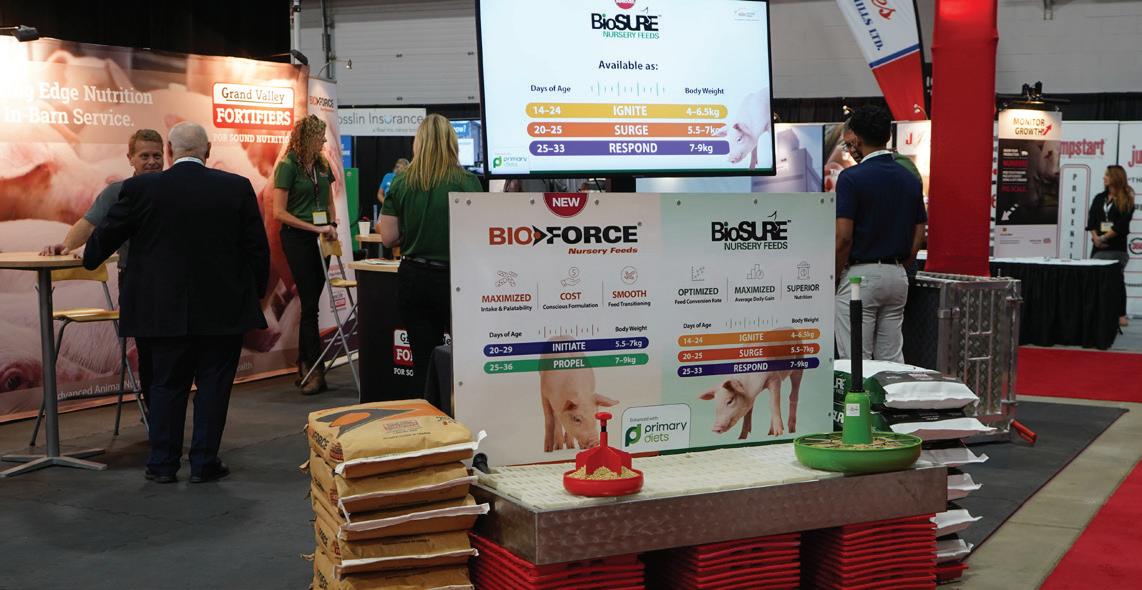
Our Grand Valley Fortifiers Swine Specialist and Farmers Depot HyCare specialists will be on site to meet with you and share new opportunities and ideas to help you achieve the best possible production of pork at the lowest possible cost of production using our nutrition products and services. Be sure to stop our booths in the Agriplex building and learn more about new biosecurity products from Farmers Depot, including the HyBag® – a revolutionary new product from MS Shippers designed to make cleaning easier, more economical and more effective. Note the show hours are now 9 am – 5 pm on Wednesday and 9 am –4 pm on Thursday. We look forward to visiting with you there! Find more information by visiting www.porkcongress.on.ca
João Ferreira, Ph.D. Monogastric Nutritionist, Fortified NutritionOne of the beautiful wonders of spring is the vibrant emergence of new life and its freshness. As the trees begin to bud and the tender green blades of grass break through the earth, you can almost smell the pure sweet fragrance of new hope. This spring, the FNL nutrition department hired a new Monogastric Nutritionist and we are glad to share this good tiding with all our highly esteemed customers.
Dr. João Ferreira, who was born and raised in Brazil, comes to us holding a Bachelor’s degree in Animal Science from Sao Paulo State University, Brazil. There, he developed a keen interest in monogastric nutrition, working with a poultry nutrition research team, where he helped with various experiments involving broilers, layer hens, quails, and turkeys, covering diverse research areas. Inspired to explore deeper into turkey nutrition, he joined the Department of Animal Science at the University of Sao Paulo for his Masters of Science, during which he conducted studies focused on reducing crude protein in turkey diets and its impact on performance, nitrogen excretion, and body composition. Full of determination to pursue a PhD, he relocated to the United States and began his studies at the University of Missouri.
His PhD focused on amino acids in poultry nutrition. Upon completing his PhD, he was employed by Cargill in Brazil, as a technical coordinator at their research center. In this role, he oversaw various experiments centered on poultry and piglet nutrition, as well as the application of feed additives to enhance digestibility and gut health. João then worked for ADM Brazil as a swine nutritionist, where he formulated diets and developed custom products for clients. In December 2021, he moved to Winnipeg, Canada, to pursue a 2-year Postdoctoral Fellowship at the University of Manitoba. The research group collaborated with Canadian BioSystems Inc and studied feed enzymes, fiber, and feed ingredient evaluation. Upon concluding his Postdoctoral fellowship, he briefly worked as a Poultry Nutrition consultant at Old Mill Feeds, where he gained valuable experience and thoroughly enjoyed his role. Though, the opportunity available at FNL was not something he could turn down and he joined FNL February 26, 2024.
João will be based in Calgary, Alberta. He will work together with Saymore and Samuel to assist in offering all swine and poultry nutrition services to customers in Alberta, Saskatchewan and Montana, USA. This is a great milestone for the team as we endeavor to bring our services closer to our customers and hard-working Swine and Poultry Specialists. The team at FNL have trained and worked with João since he joined and are confident to say we are blessed to have a humble, curious, intelligent, hardworking and very friendly nutritionist joining our great team.
Please join us in welcoming Dr. João Ferreira to the FNL team.
If you have any questions for our team, please feel free to contact João at: Joãoferreira@fortifiednutritionltd.ca | 204-698-3078
Thought of the Day!
“In my vain life I have seen everything. There is a righteous man who perishes in his righteousness, and there is a wicked man who prolongs his life in his evildoing.” –Ecclesiastes 7: 15
When we read these words of Solomon, the wisest man to ever live, we can easily become frustrated as we’ve likely all seen this play out in our modern day lives. Sometimes good people die young and evil people live to a ripe old age. So how do we respond to the fact that the world seems unfair? When you read all of Ecclesiastes 7, you will find that Solomon is suggesting two things in this passage:
1. Don’t try to put God in your debt. This is often referred to as the religious response.
2. Don’t choose to live your life as if your actions don’t have consequences. This is the rebel’s response.
VS. 18 – Do focus on who God is. Remember, He loves me, and He is just. He will wrap his arms around me and carry me through; and one day He will judge all things. You see, YOLO (You Only Live Once) starts with a wrong assumption – you actually live twice. The question is, will you only die once?

